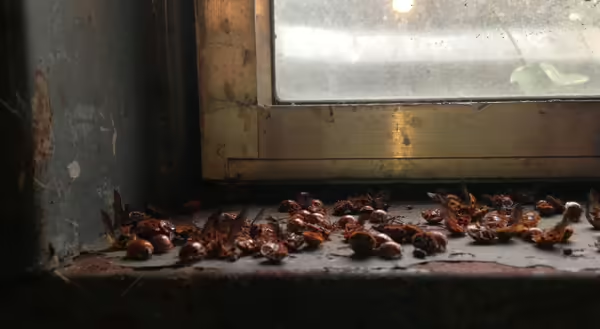
Each fall, as temperatures diminish and day length gets shorter, Asian lady beetles begin to accumulate around larger buildings. They're getting ready to go into their winter habitat, which in their native Asia, is sheltered areas along a mountain side. It's hard to find very many mountain sides in Illinois, so they're seeking out the closest alternative, larger buildings.
Lady beetles are predators. Their favorite food is aphids. The years we have high soybean aphid populations are the years in which Asian lady beetle populations are huge as well.
Since these insects overwinter as adult beetles, they seek protected areas and overwinter in large numbers, clustered together. Large two story houses are the closest we come to mountains, and those seem to be preferred sites. It seems like they're attracted to white colored houses. Old farm houses seem to have more trouble keeping the beetles out of the house as opposed to modern houses. This is simply because there are more cracks and crevices in older homes. Most newer homes are much tighter, making accessibility more difficult.
Once inside the home, the beetles will congregate in out of the way areas (wall voids, attics, etc.) where they will spend the winter. Sometimes individuals will appear throughout the winter, but for the most part, they will remain in these out of the way places until temperatures increase next spring, then they will be looking for a way out of the house.
Lady beetles can bite if irritated, and they can cause a stain that's hard to remove from walls. Best bet is to leave them alone, or if they're in small numbers in your home, gather them up by hand and throw them outdoors. Caulk cracks and crevices to keep them out of the house. If numbers become too large inside to remove by hand, consider using a vacuum cleaner. Place some nylon hose in the vacuum tube to catch the beetles and after you've completed the sweeping, empty the bag of beetles outdoors (preferably not near your home). Remember that lady beetles are excellent predators of many insects that can cause damage to plants. They are good guys, so lets try and keep as many as we can.
Photo by Andrew Holsinger